This story originally appeared in i-D’s The Out Of Body Issue, no. 367, Spring 2022. Order your copy here.
Sometimes, there are shows that restore your faith in fashion. Often, they happen in strange circumstances. As the first autumn chill swept through Paris on an early October morning, a throng of recently reunited fashion folk entered Loewe’s vast lime-washed, purpose-built pine box of a show space, to witness a radical reset of what fashion can look like in the here-and-now. No props, no artworks, just a “blank piece of paper”, as creative director Jonathan Anderson described the setting.
Perhaps ‘reset’ isn’t quite the right word. Renaissance feels more fitting, especially considering Jonathan was initially kickstarted into creative mode by his “all-time favourite painting” – the 16th century The Deposition from the Cross by Italian mannerist artist Jacopo Pontormo. Coincidentally painted at the end of an outbreak of plague in Italy, it depicts angels in their sumptuous, colourful drapes, all of them looking a bit hysterical, mouths agasp and heads tilted back.
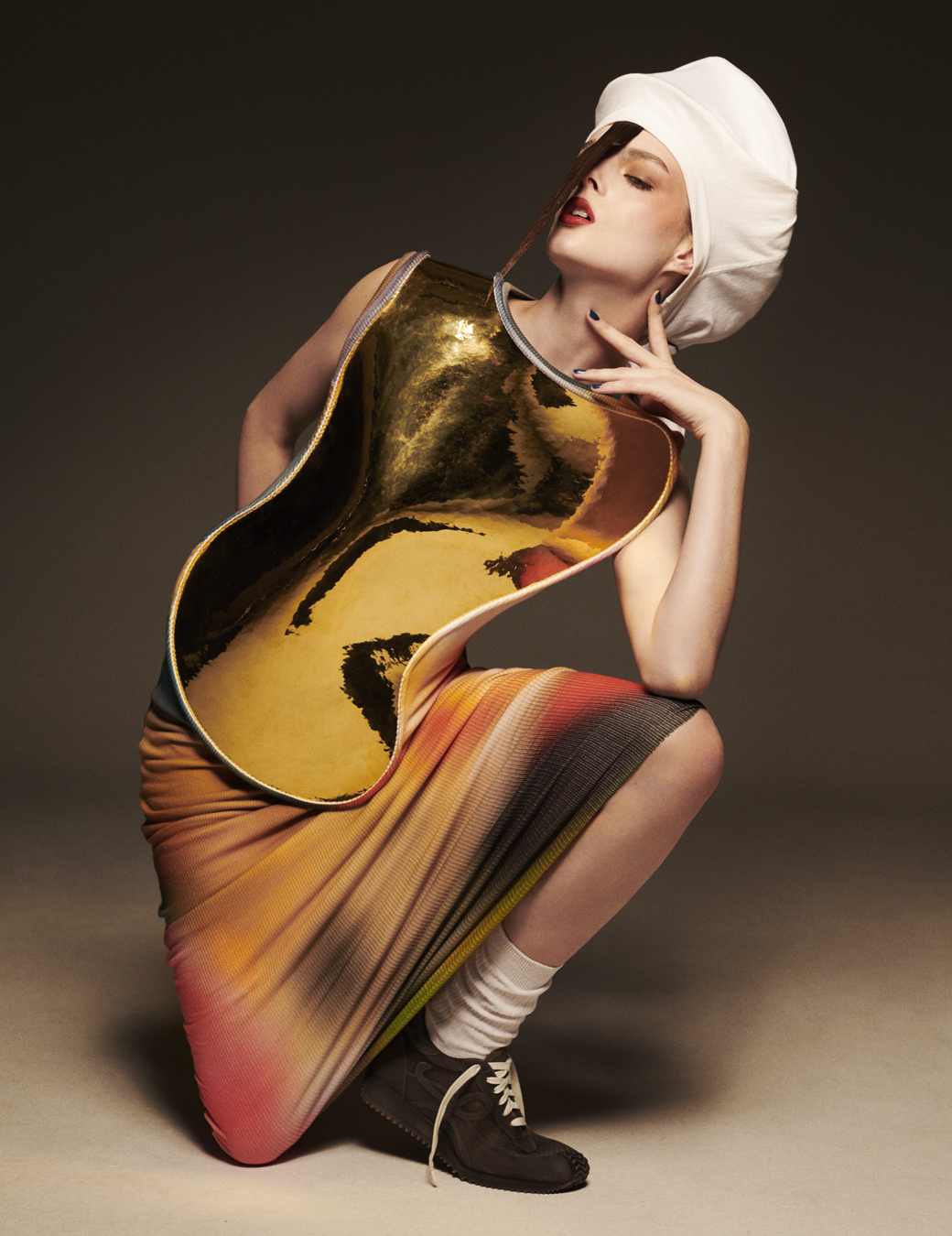
The bare-faced models, who emerged from a rectangular hole in the floor, resembled a race of cyborgs in their protruding silhouettes. They arrived in soft jerseys harpooned like Lynn Chadwick sculptures, organically-curved mirrored breastplates and drapes of sugared-almond chiffon, that simultaneously channelled medieval deities and Japanese anime heroines. The heels of their stilettos were resin red roses, bars of soap, birthday candles, bottles of nail polish and cracked eggs – as if they’d trodden through the detritus of a domesticated civilisation in some faraway past, and arrived via this lo-fi, eco-spaceship. Angels are kind of aliens after all, and the two usually bear resemblance to humans in our imaginations. Right before our eyes, the body as we know it took on an otherworldly mutation into something disturbing yet desirable.
It felt jarringly off-piste from the jazzed-up sweatpants and hackneyed classicism of shows elsewhere; an olive branch for those who want to leave the old ways behind and truly step into the future. “Neurotic, psychedelic, and completely hysterical,” is how Jonathan summed it up. “I feel like the idea of doing a show now is some form of surrealist, almost neurotic, act, because everything is normal, but it isn’t really,” he says. “I didn’t want something completely grounded in reality. It had to have a distance.”
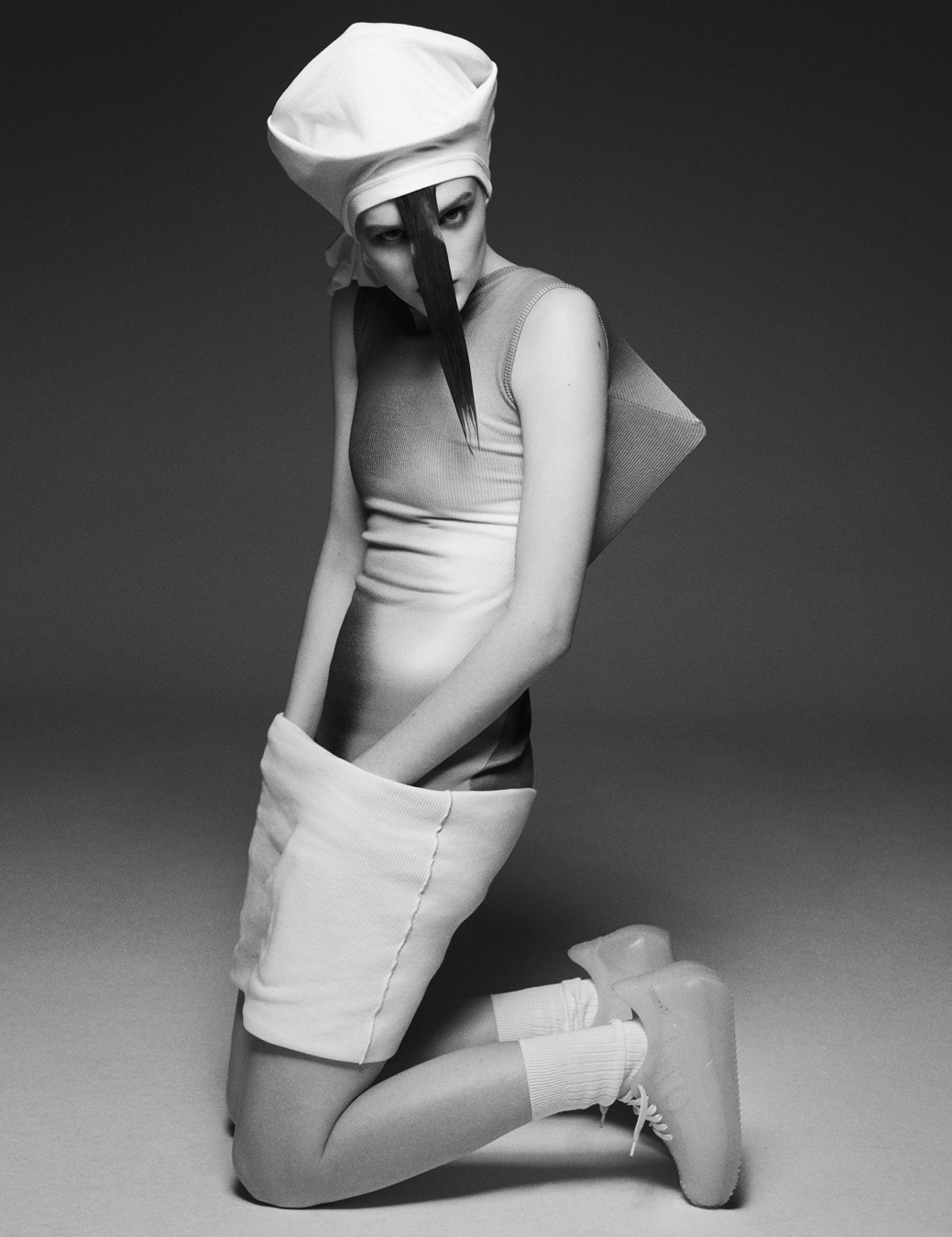
A distance from reality or even familiar modernity, for sure. But also from Loewe itself, and what has become expected of it as a major LVMH fashion house. It’s been a hot minute since Jonathan took the helm, and though by now he can be called one of the most influential designers of the 2010s, you get the sense he wanted to shake off the stasis and introspection that comes from a year-and-a-half of working remotely. “People know that I exist in this industry, but it was kind of nice to do a show to be like, I am still here somehow,” he later reflects. “You can’t get too comfortable with the idea of yourself within a brand. I felt like we needed to break the archetype that we had built, because I just feel like, as the pandemic rolls through, aesthetics are changing, we just haven’t seen the result of that change yet.” The question he kept asking himself was: “Is the creative idea big enough to last?” In other words: are you still watching?
Get him going, and Jonathan Anderson will blow you away with his maniacal, mile-a-minute voraciousness. He’s a hyperactive thinker, paradoxically shifting the course of his thinking season to season, yet always expressing his vision with clarity and conviction. You get the sense he’s racing against himself, which is what makes his work feel like it exists on the precipice of the future. He’s fashion’s Cassandra; the well-dressed woman’s Warhol. For the last year, he’s come up with inventive alternatives to physical fashion shows – which he refused to simply stage and film, like so many designers – embodying Marshall McLuhan’s mantra that the medium is the message. He vowed to never go back to the broken system before you-know-what changed everything.
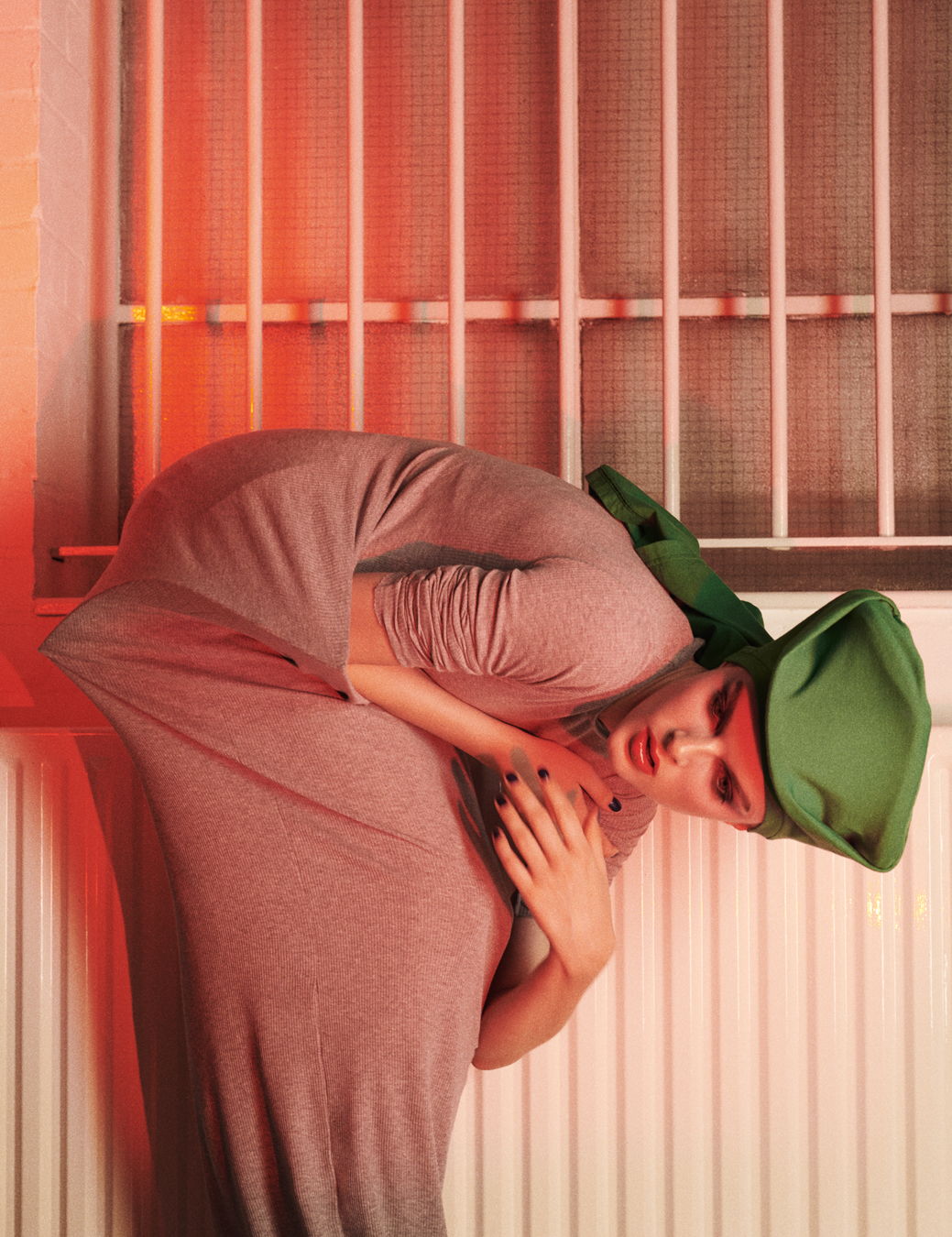
During lockdown, Jonathan’s collections elevated the kind of crafts that people were taking up at home. Basketry weaves became bulbous skirts and tunics, tender knitwear offered goals for DIY knitters, and Japanese shibori dyed garments provided pointers for those tie-dying in their kitchen sinks. He cleverly packaged it all up in enjoy-at-home boxes and books inspired by Marcel Duchamp’s La Boîte- en-valise, the deliveries of which became social media sensations. But, just as Loewe had applied its genius craft-focused marketing to everything from tomato-scented candles to elephant-shaped keychains, the rest of fashion began to emulate its recipe for success.
When he was hired by LVMH in 2013, his mission was to turn the Spanish leather goods company into a byword for global craftsmanship in the digital age. He succeeded through establishing its impressive craft prize: through collaborations with tactile artists, sculpture-filled stores, and an emphasis on rarefied artisanal skills, and shifted the focus from the meaningless statistics of ‘x-hours of embroidery’ to a genuine culture of love of making – and it was that which made the products genuinely desirable. However, craft, like the word ‘luxury’, has become ubiquitous as an antidote to fashion’s reputation as the original sin of unsustainability. Incidentally, the word that Jonathan Anderson repeated in the scrum of interviews after his show was ‘fashion’. If craft represents a means to an end, albeit a delicate and beautiful process, then fashion is all about the immediacy of shape, silhouette and surface. “The starting point came from thinking, ‘What is the purpose of a show? Why do we do them?’” he explained. “This is a very fashion show.”

Extreme times call for extreme fashion, as you’ve probably heard a million times over the last half-decade. Even before the pandemic, Jonathan would stage biannual shows that were full of out-there clothes, and fill out the rest of the year’s calendar with interesting collaborations, product launches and cultural projects, but he remained elusive to shoppers only familiar with household names. Summer clothes were delivered in winter, winter clothes in summer, and so many brilliant clothes would purely exist on the catwalk in front of editors, never going into production, and not quite translating to the endless scrolling of backlit digital imagery and mass media. Though once a subcultural niche, fashion is now competing for your attention with headline news updates, instantly-accessible celebrity culture, reality television and your friends’ holiday pictures. Designers are battling it out for your attention, hoping to win the victory of your desire in order to ensure their survival.
During lockdown, clothes briefly took a backseat to storytelling – both given that there was nowhere to wear them, and a constant uncertainty as to whether the factories which would ensure their production, or the shops which would sell them, would remain open. Overnight, fashion was forced to catch up with the get-to-know-me messaging that surrounds sports broadcasts, movie junkets and album launches. Designers were made to descend from their ivory towers – even Miuccia Prada did live Q&As on YouTube, and John Galliano starred in a making-of documentary. Jonathan was no exception, doing more Zoom interviews and face-to-camera broadcasts than ever before, and thus developing an unexpected appreciation for explaining his off-kilter collections to his customers, spectators, and fans. It helps that he was once an aspiring actor; he’s good with delivering pithy one-liners.

“It helped for people to understand that we are experimenting and it’s fine to experiment within luxury,” Jonathan explains. “It’s quite weird because I’m now in a state of mind where I love a billboard because I like mass consumption. I think it’s interesting conceptually that a brand can resonate with as many people as possible. I mean, this idea of alienation just does not work. It doesn’t work for me, either.”
Plenty of documentaries and movies like The Devil Wears Prada and shows like Emily in Paris have widened the public perception of an industry that was previously considered niche. These days, Jonathan is actively engaging with all kinds of ideas about what fashion is, and who it could speak to. It might be bought by a few, but it can appeal to the many. Like the patchwork JW Anderson cardigan that became a TikTok sensation after it was worn by Harry Styles, resulting in Jonathan releasing it as a knitting pattern to be made at home, or the giant chain-embellished loafers that his team simply can’t produce enough of to keep up with demand.
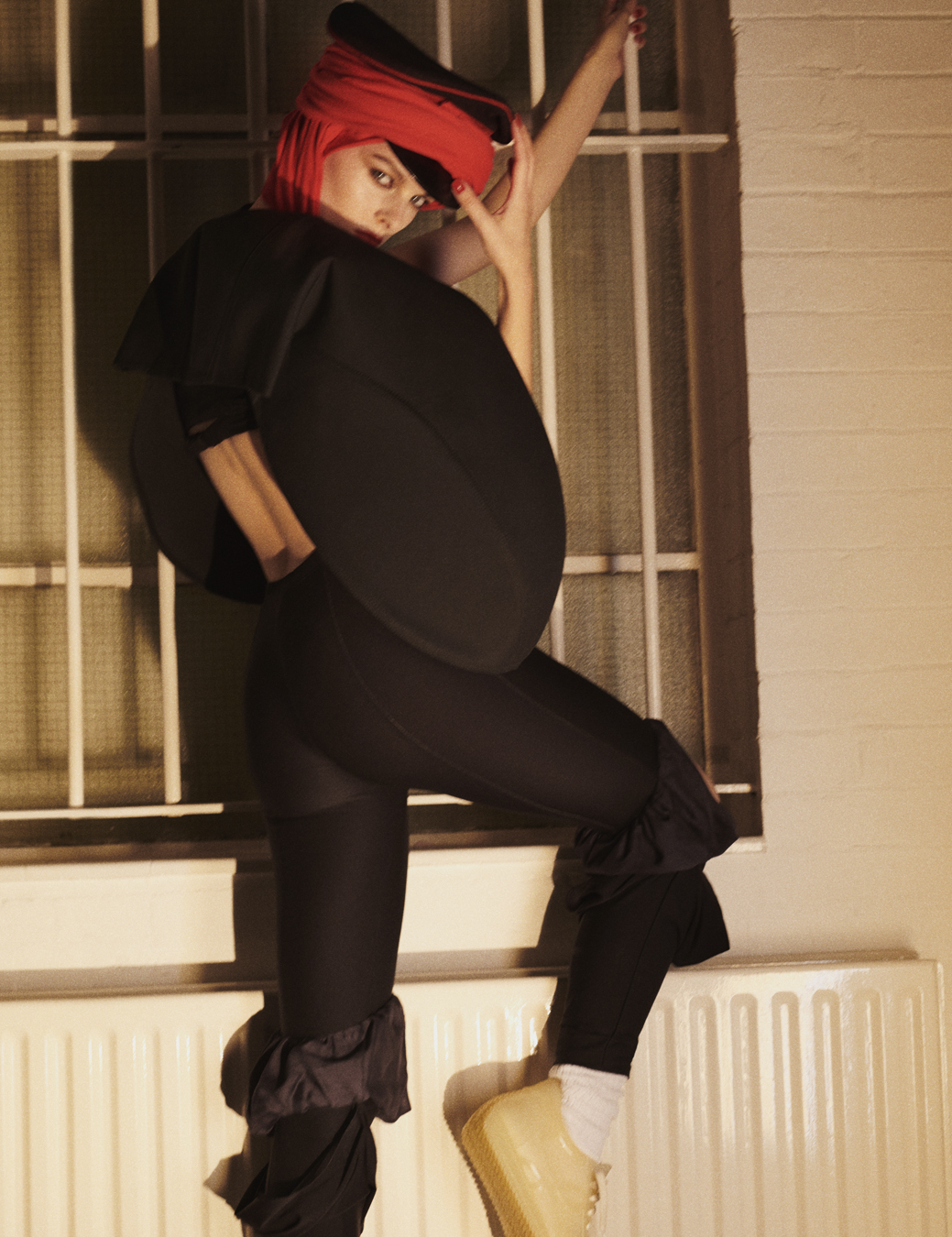
And yet, despite his interest in mass, the comeback show that Jonathan staged couldn’t have appeared more esoteric. Here were women in dresses with stained-glass windows on their breasts, coats worn backwards, exaggerated peplums that sagged at the bust. After the show, a female colleague remarked that the clothes looked like they were designed to entrap women. Sky-high heels? Hammered-metal breastplates? Extreme spikes jutting out of dresses? Hardly looks to fit a model of mass-consumption, or the season’s consensus for going out and feeling sexy after months of cabin fever. Yet, perhaps as a mirror to society, they offered an apt observation of how our eyes have become so attuned to extremities, and how so many bodies have become clinically-enhanced, contoured equivalents of GMOs.
“It’s impossible for me to relate to women, but I have always approached clothing with this idea that it’s not about genderless clothing and it’s not about sexuality, but it’s just about the individual somehow, almost like you are proposing an individual who has no sort of like place in time,” he explains. “I like building a series of looks because they become different animations of that one character’s attitude. It sort of opens this door where you have to pose something for someone to react against or for yourself to react against. I think for me, it is about the empowerment of a silhouette, which ultimately becomes the intrigue.”
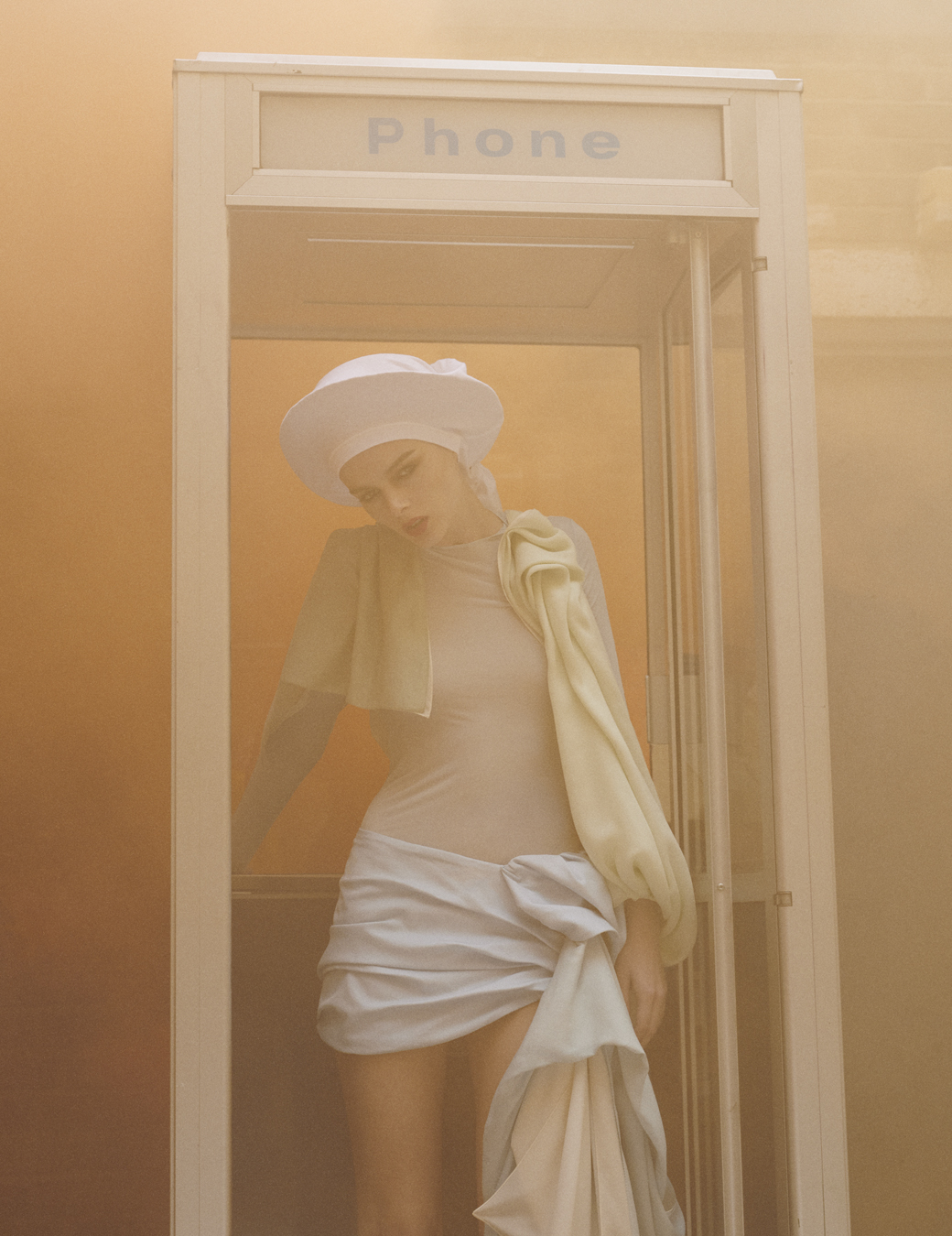
Anthea Hamilton – the British artist who Jonathan has collaborated with several times at Loewe, and who was there to witness the show – described it as like plunging into an ice bath, refreshing her own ideas and creative process. Wearing Loewe, she says, allows her to present a different part of her “artistic persona” than in her everyday life. “It was convulsing, you know, like we’ve all been in this God-knows-what phase, and then suddenly it was like, this baby was born; this very raw set of ideas,” she says of the show over the phone, and mentioned a roll call of sculptors and artists of whom there are hints in the collection – Eileen Gray, Lynn Chadwick, Allen Jones – and pointing out that the collection was akin to artwork.
“So much of fashion is quite impractical because of body shape and all of that anyway. This was kind of very explicit about that – that this is what fabric can do or what shapes can do or what movement can do,” she continues. “I enjoyed how unapologetic it was, and I was aware of the difficulties of it as well, but when you see that in a sculpture, you would never question that a body might not be able to do that.”
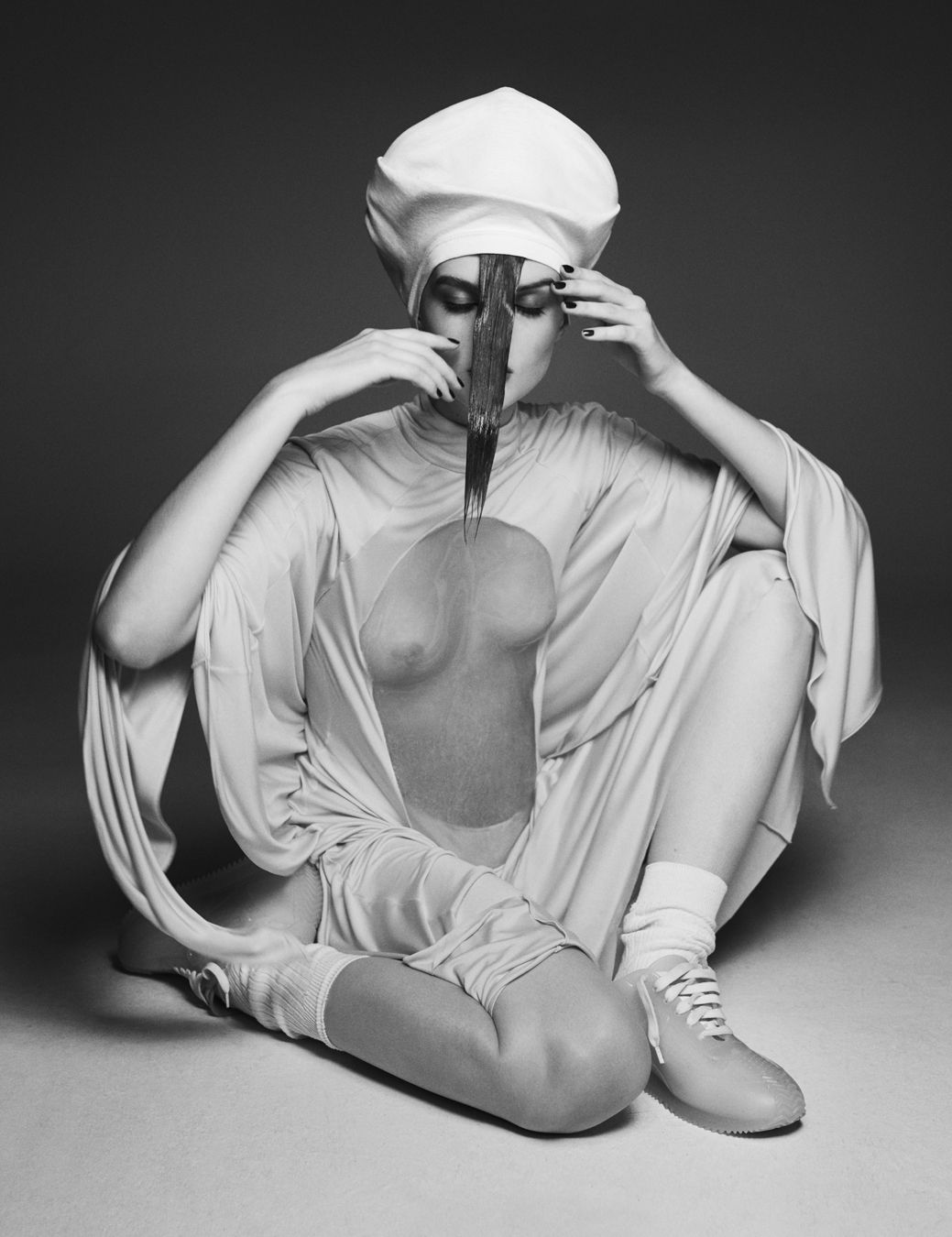
“I think there’s sometimes over-rationalisation in fashion today,” Jonathan says with a wry smile. “That, with one garment, you’re trying to save the world, but ultimately sometimes art just has to be a mirror to society. You have to look at culture; it may not give you what is right, but you try to find solutions.” Perhaps that solution is that as fashion is becoming entertainment, and entertainment is becoming art, clothes must channel more than just hanger appeal; they must be more sensorial and provocative than anything that could ever exist in the Metaverse. After all, the online resale market has turned sartorial shoppers into art collectors.
“We’ve taken a ten-year period before the pandemic, and we’ve kind of dumped it into the last two years of every neurosis that we were ever going to deal with: every inequality, every kind of race, financial, or environmental problem in society,” he continues. “When you’re doing all that processing and producing a collection, of course a dress is going to look like someone has been harpooned.”
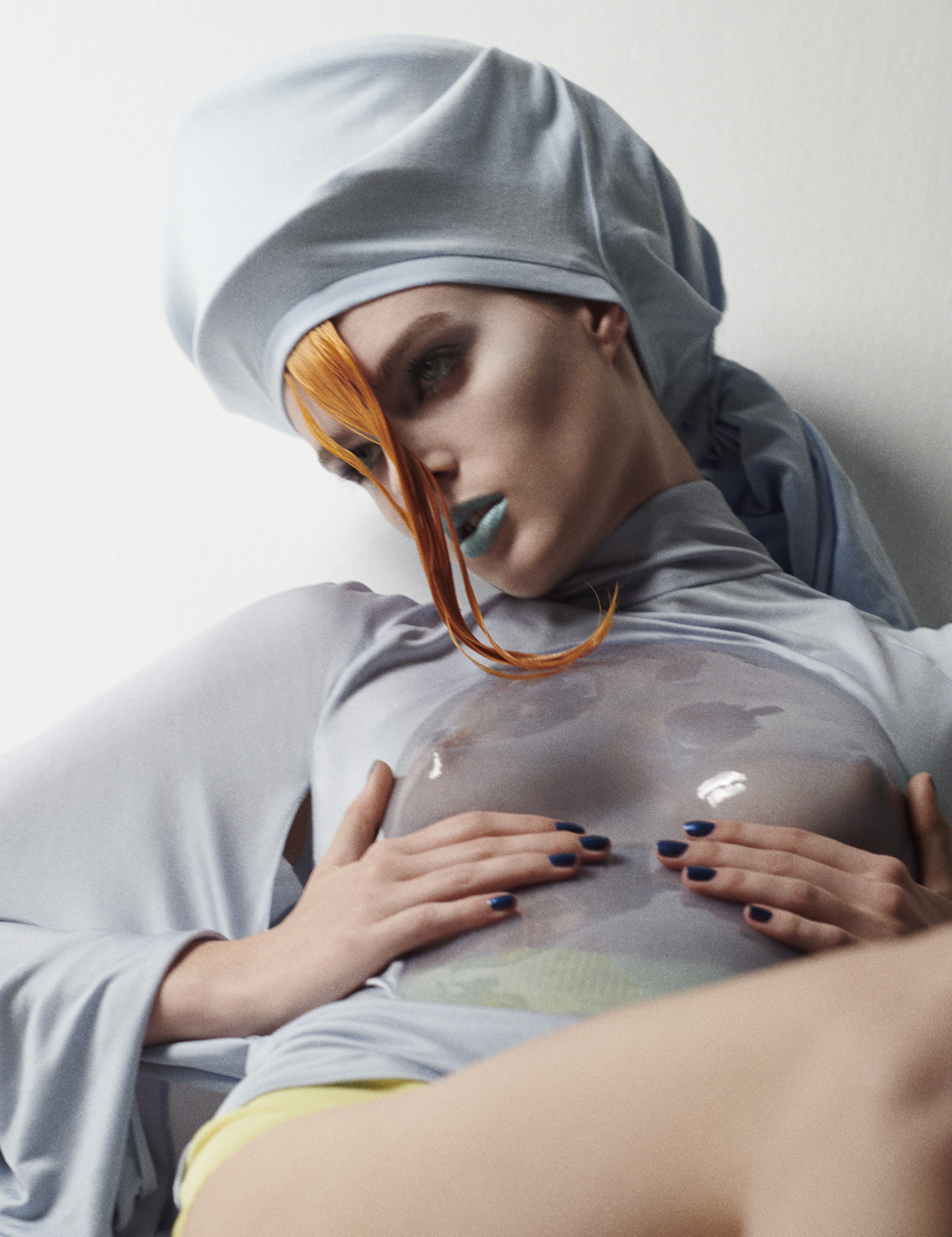
It’s the kind of bombasticism that defies any easy categorisation by an algorithm. Is this a horror show or a sci-fi movie? A trippy cartoon or comedy with a strong female lead? “We’re at this very strange moment where it is the beginning of a chapter and I don’t know where we’re going ultimately, which is kind of exciting,” Jonathan asserts. For anyone watching, it’s the kind of season finale that leaves you wanting more.
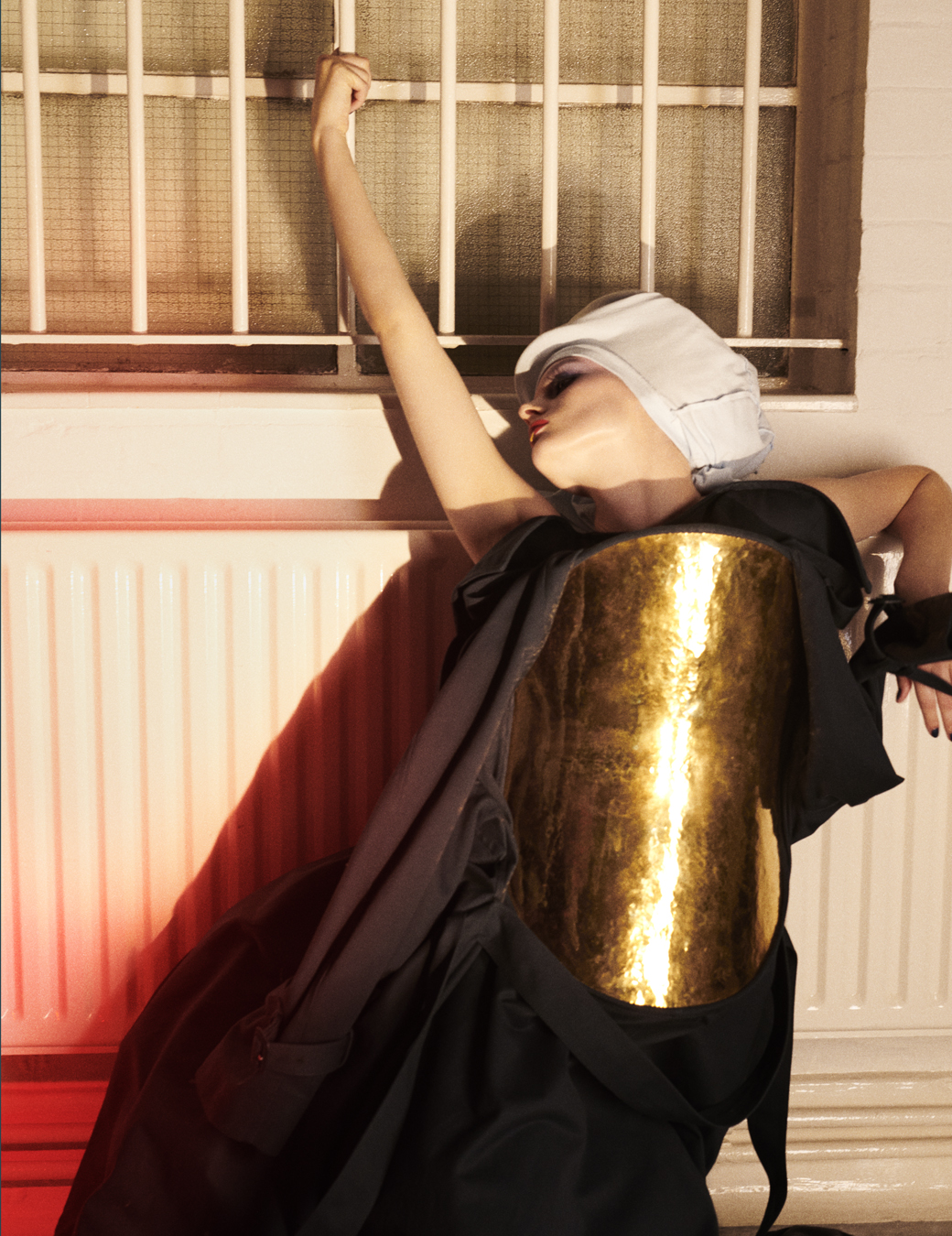
Follow i-D on Instagram and TikTok for more on fashion.
Credits
Photography Theo Sion.
Fashion Max Pearmain.
Hair Franziska Presche at TOGETHER using Oribe.
Make-up Thom Walker at Art + Commerce using Givenchy.
Nail technician Saffron Goddard at CLM Agency using Dior Manicure Collection and Miss Dior Handcream.
Set design Julia Dias at Canvas Represent.
Photography assistance Simon McGuigan and Max Hayter.
Digital operator Anna Hendry.
Styling assistance Emma Simmonds and Mitja Olenik.
Hair assistance Kanae Kikuchi and Joe Burwin.
Make-up assistance Manabu Nobuoka.
Set design assistance Sam Edyn.
Production REP.
Casting director Samuel Ellis Scheinman for DMCASTING.
Model Aylah Peterson at Premier.
All clothing and shoes (worn throughout) LOEWE, hats (worn throughout) MAX PEARMAIN STUDIO, socks (worn throughout) PANTHERELLA.



